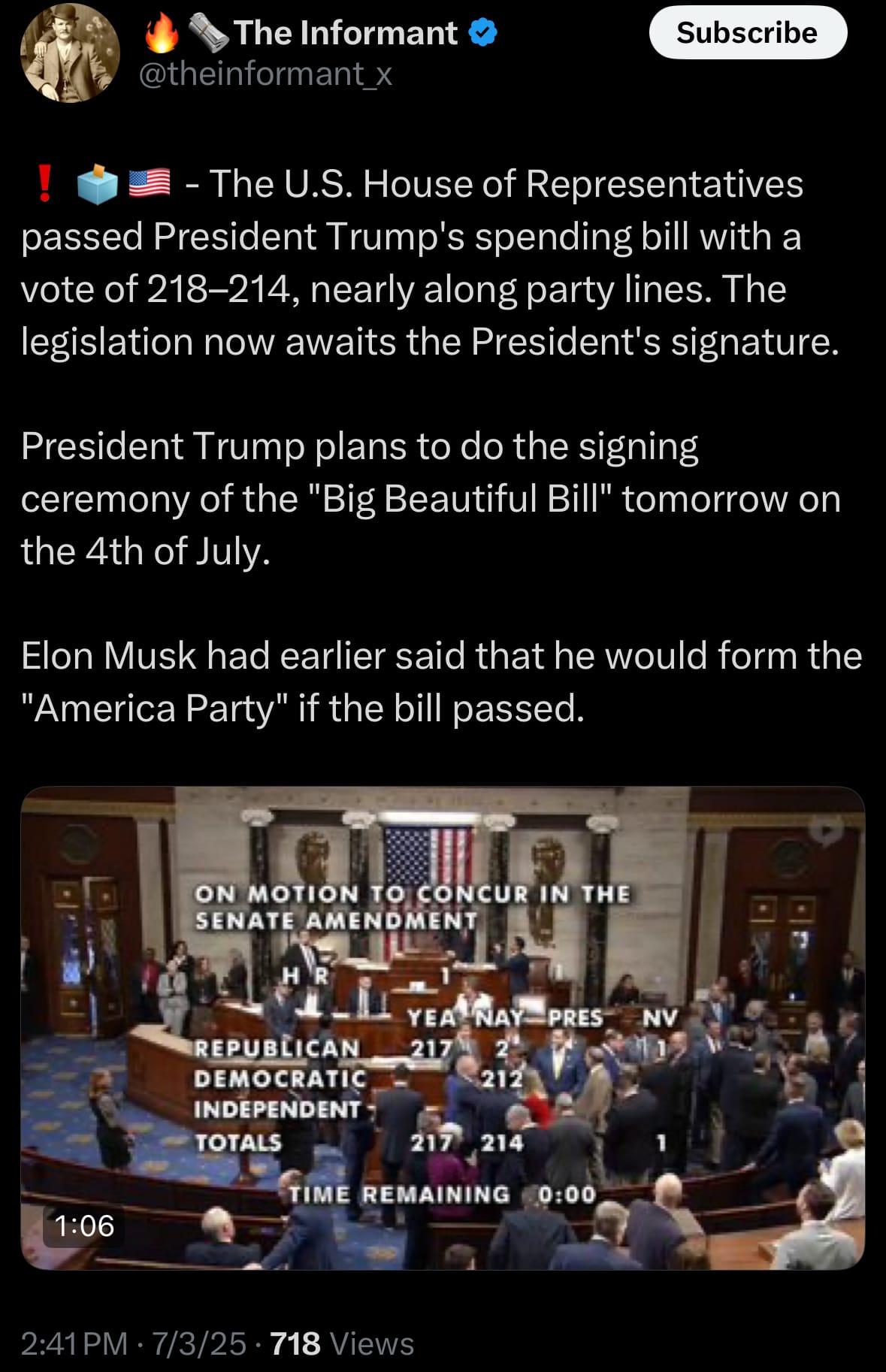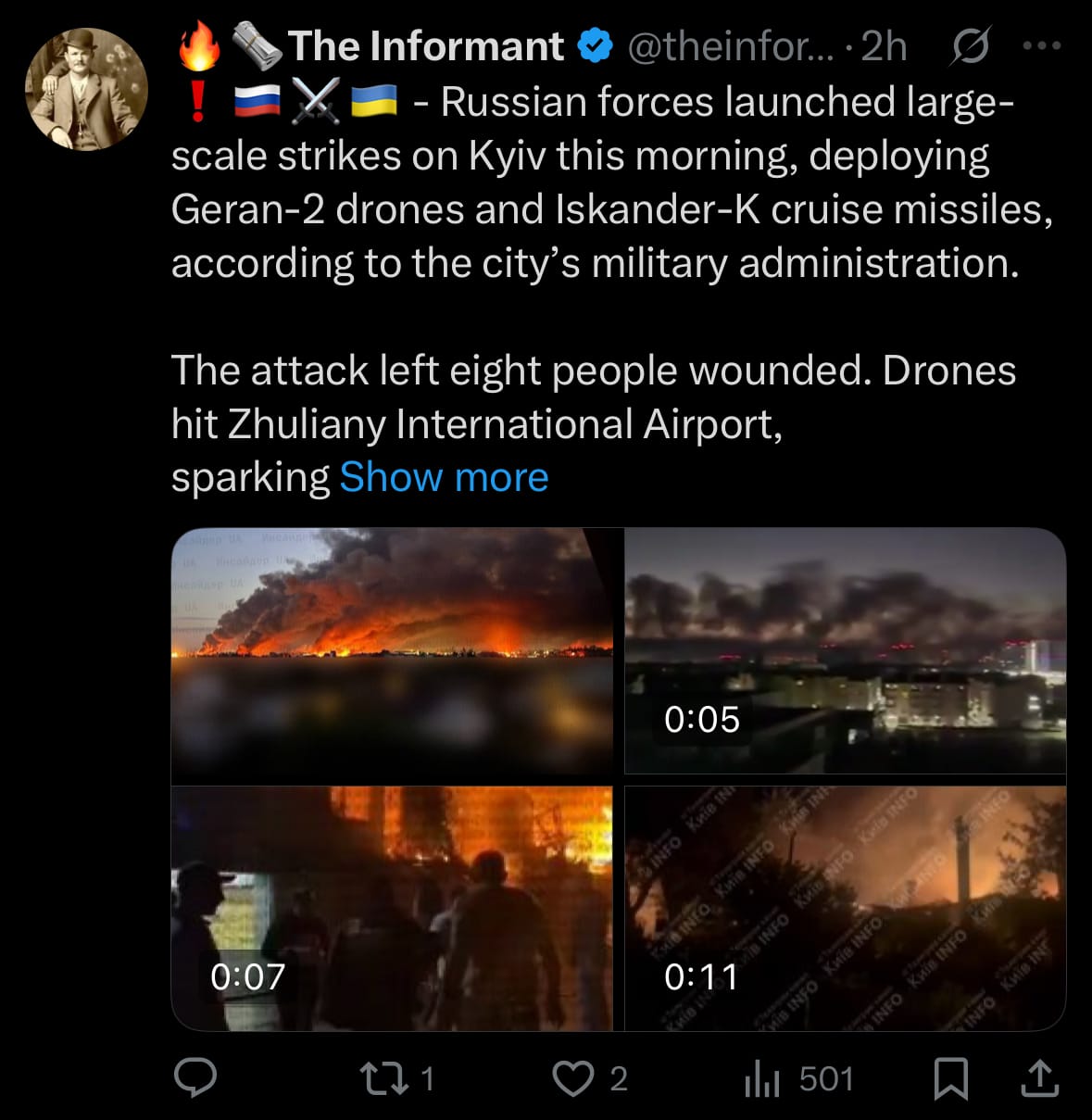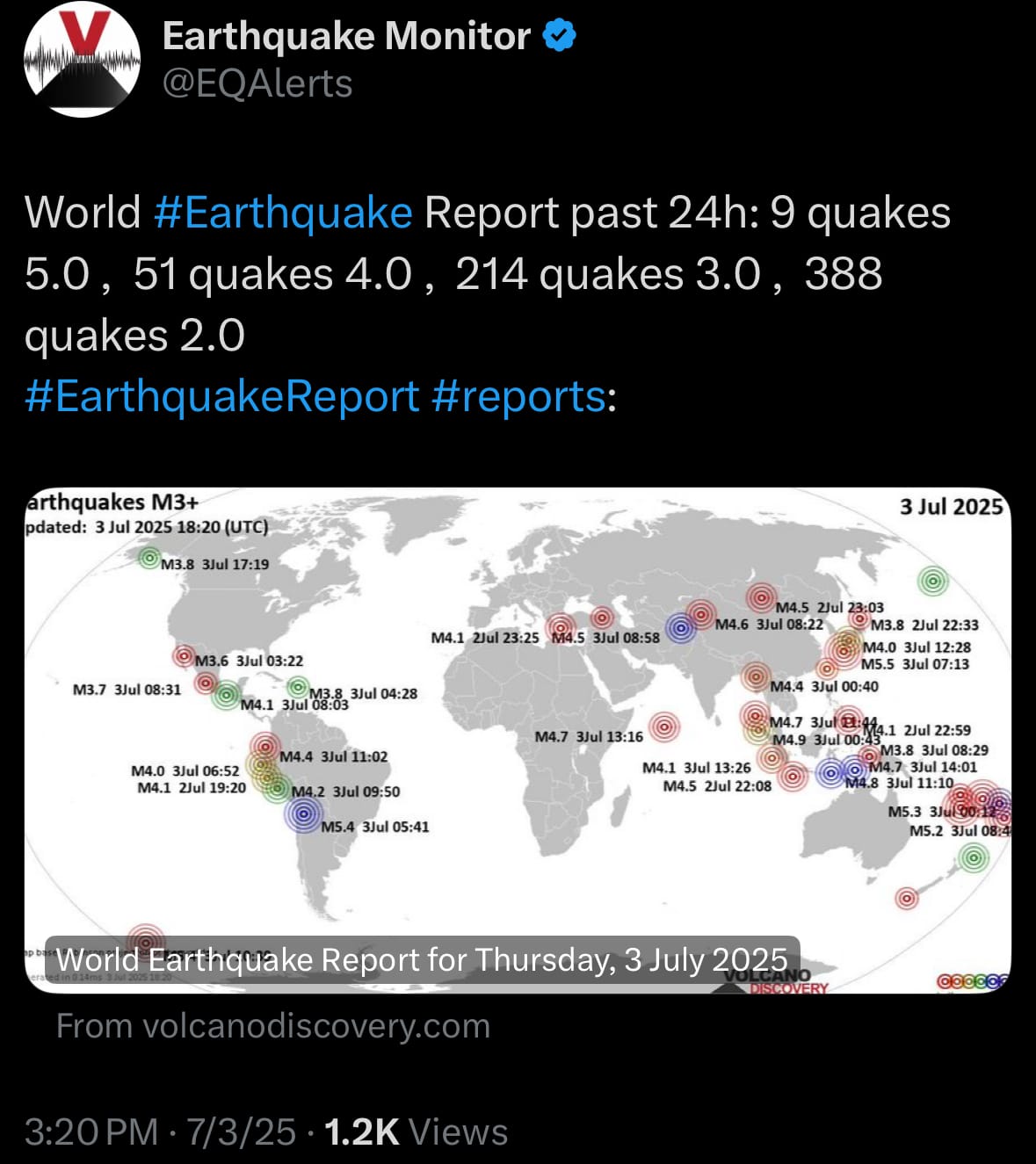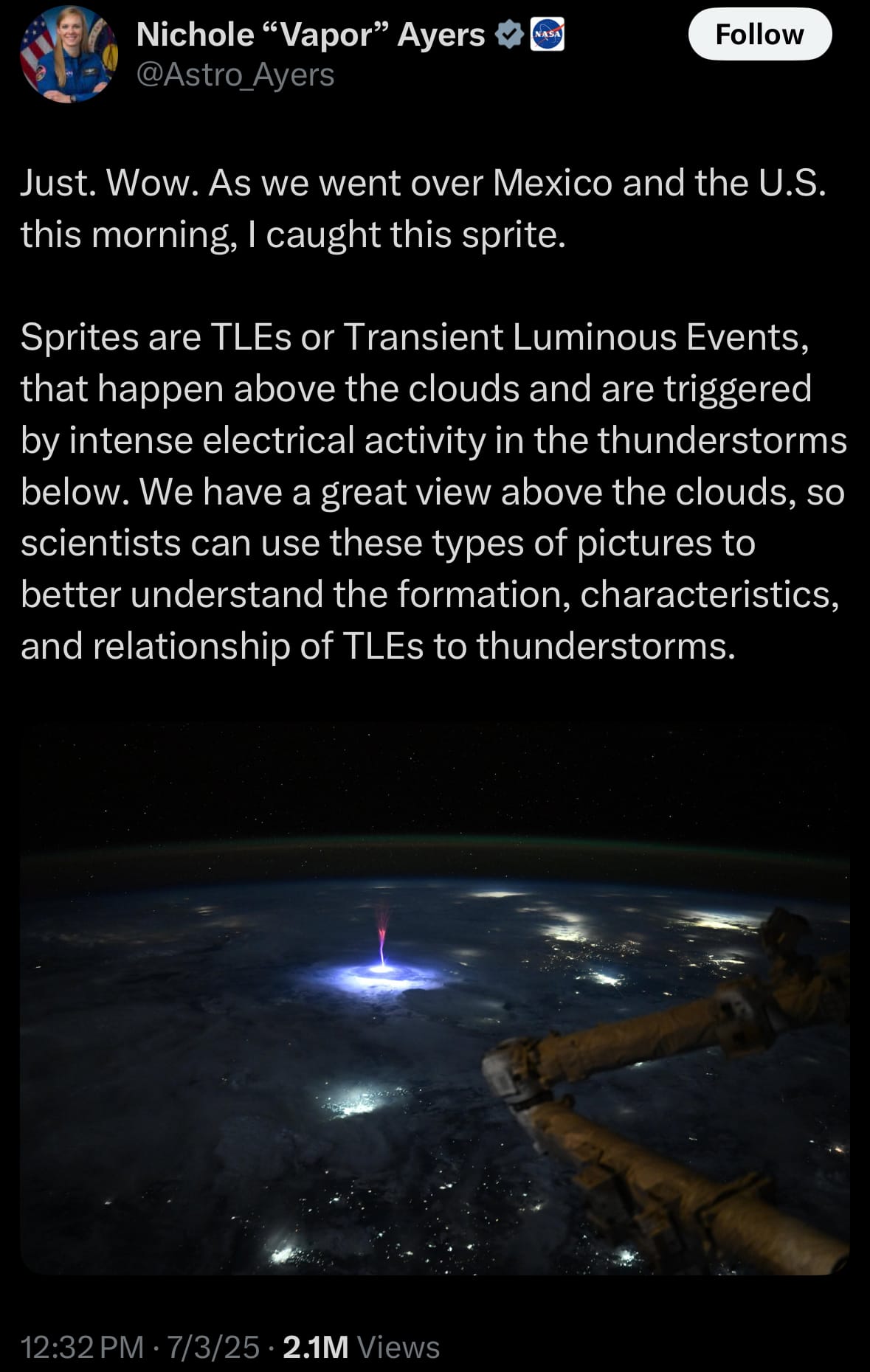Friday☕️

Trending:
- Yesterday, July 3, 2025, the U.S. House of Representatives passed President Donald Trump’s comprehensive spending bill, titled the "ONE BIG BEAUTIFUL BILL ACT," with a close vote of 218–214, nearly along party lines. The legislation, already approved by the Senate, is a wide-ranging package that includes tax cuts for corporations and high-income individuals, increased funding for defense programs, and enhanced border security measures, such as additional resources for immigration enforcement. It also features significant reductions to federal safety net programs, including cuts to Medicaid and food assistance, alongside provisions to streamline government operations and reduce regulatory burdens on businesses.

- President Trump is scheduled to sign the bill into law on July 4, 2025, at 5 p.m. ET during a White House ceremony, marking a major legislative milestone early in his second term. The bill’s passage has sparked varied reactions, notably from Elon Musk, who had threatened to form a new "America Party" if it was approved. Musk criticized the legislation as a "disgusting abomination," arguing that its combination of tax breaks, increased defense spending, and social program cuts will balloon the national deficit while failing to address government inefficiency. The bill’s packaging reflects a strategic bundling of Republican priorities—economic deregulation, military investment, and border security—while drawing criticism for reducing support for vulnerable populations and increased spending.
Economics & Markets:
- Yesterday’s U.S. stock market:

- Today’s commodity market:

- Today’s crypto market:

Geopolitics & Military Activity:
- Today, July 4, 2025, Russian forces launched a large-scale attack on Kyiv, starting overnight from July 3, using Geran-2 drones and Iskander-K cruise missiles. The assault, which began around 10 p.m. local time with missile strikes at 12:30 a.m. and 2:30 a.m., targeted 13 locations, including Zhuliany International Airport, which caught fire, and southeastern suburbs. At least 14 people were injured, with 12 requiring hospitalization, and damages spanned multiple districts, affecting residential buildings, a medical facility, and storage sites. Thick smoke blanketed the city, with air quality in southern Kyiv deteriorating to 16 times worse than normal, prompting warnings to close windows due to hazardous combustion products.

- The attack’s widespread impact extended beyond Kyiv, with drone debris causing fires and injuries in regions like Poltava. Strikes hit Obolon, Sviatoshynskyi, Dniprovskyi, Solomianskyi, Shevchenkivskyi, and Holosiivskyi districts, damaging homes, schools, and businesses. This escalation, following a deadly June 17 assault, reflects intensified Russian operations amid strained peace talks and a reported halt in U.S. Patriot missile shipments. The environmental and humanitarian toll, including health risks from poor air quality, underscores the severe challenges facing Kyiv as the conflict persists.
Environment & Weather:

Space:
- Yesterday, July 3, 2025, the Progress MS-31 mission launched from Baikonur Cosmodrome, Site 31/6, Kazakhstan, using a Soyuz-2.1a rocket. This resupply mission to the International Space Station (ISS), also known as Progress 92 or ISS 92P, carried 2,625 kg of cargo, including 1,205 kg of pressurized cargo (food, clothing, and scientific equipment), 950 kg of fuel, 420 kg of drinking water, and 50 kg of nitrogen gas to replenish the station’s atmosphere. The mission, the 184th Progress flight, will support ISS operations until December 2025, ensuring crew sustenance and scientific research.
- The Shiyan 28 B-01 launch occurred earlier that day at 09:35 UTC from Xichang Satellite Launch Center, China, using a Long March 4C rocket. This mission placed an experimental satellite into Low Earth Orbit (LEO), marking China’s 36th orbital launch of 2025. The satellite’s purpose is classified, likely involving technology demonstration or space environment monitoring, typical of the Shiyan series. While the satellite is operational, no specific details about its objectives or capabilities have been publicly disclosed.

Statistic:
- Largest assets on Earth by market capitalization:
- GOLD: $22.504T
- 🇺🇸 NVIDIA: $3.885T
- 🇺🇸 Microsoft: $3.707T
- 🇺🇸 Apple: $3.189T
- 🇺🇸 Amazon: $2.371T
- 🇺🇸 Alphabet (Google): $2.184T
- BTC: $2.170T
- SILVER: $2.087T
- 🇺🇸 Meta Platforms: $1.807T
- 🇸🇦 Saudi Aramco: $1.598T
- 🇺🇸 Broadcom: $1.294T
- 🇹🇼 TSMC: $1.217T
- 🇺🇸 Berkshire Hathaway: $1.046T
- 🇺🇸 Tesla: $1.015T
- 🇺🇸 JPMorgan Chase: $822.61B
- 🇺🇸 Walmart: $784.95B
- 🇺🇸 Visa: $701.03B
- 🇺🇸 Eli Lilly: $700.83B
- 🇺🇸 Oracle: $666.59B
- 🇨🇳 Tencent: $579.31B
- 🇺🇸 SPY: $573.92B
- 🇺🇸 Netflix: $552.04B
- 🇺🇸 Mastercard: $516.91B
- 🇺🇸 Exxon Mobil: $483.54B
- 🇺🇸 Costco: $437.72B
History:
- The United States began as 13 British colonies, established in the 17th and 18th centuries, with economies rooted in agriculture, trade, and slavery. After growing tensions over taxation and governance, the colonies declared independence in 1776, winning the Revolutionary War by 1783 with the Treaty of Paris. The Constitution, ratified in 1788, unified the states under a federal government, though debates over centralized power versus states’ rights shaped early politics. Two parties emerged: the Federalists, favoring strong national authority, and the Democratic-Republicans, advocating for agrarianism and limited government. By the early 19th century, westward expansion and industrialization fueled growth, but the issue of slavery deepened sectional divides. The 1860 election of Abraham Lincoln, a Republican opposed to slavery’s expansion, triggered the secession of Southern states, igniting the Civil War (1861–1865). The Union’s victory preserved the nation, abolished slavery, and solidified federal supremacy, setting the stage for rapid economic and territorial expansion.
- Post-Civil War, the U.S. transformed into an industrial powerhouse, driven by railroads, steel, and immigration. By 1900, it rivaled European powers, with a growing navy and global ambitions, evidenced by the Spanish-American War. World War I (1917–1918) saw the U.S. emerge as a decisive force, tipping the Allies’ victory and boosting its economic influence. The interwar period brought prosperity, then the Great Depression, addressed by New Deal reforms. World War II (1941–1945) cemented U.S. dominance: its industrial output armed the Allies, the Manhattan Project produced nuclear weapons, and victories in Europe and the Pacific showcased military might. Post-1945, the U.S. led the global order as a superpower, driving technological innovation (e.g., computers, internet), economic growth via the dollar’s reserve status, and military supremacy through NATO and advanced weaponry. From a colonial outpost, the U.S. leveraged its geography, resources, and democratic ideals to become the world’s preeminent economic, technological, and military power by the 21st century, navigating challenges like the Cold War, globalization, and internal political polarization.
Image of the day:

Thanks for reading!
Earth is complicated, we make it simple.
Click image to view the Earth Intelligence System:



Support/Suggestions Email:
earthintelligence@earthintel.news




